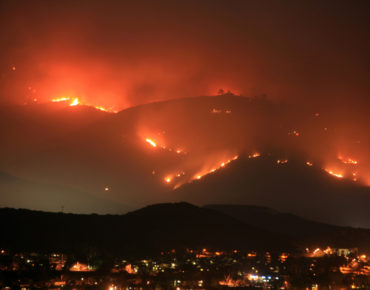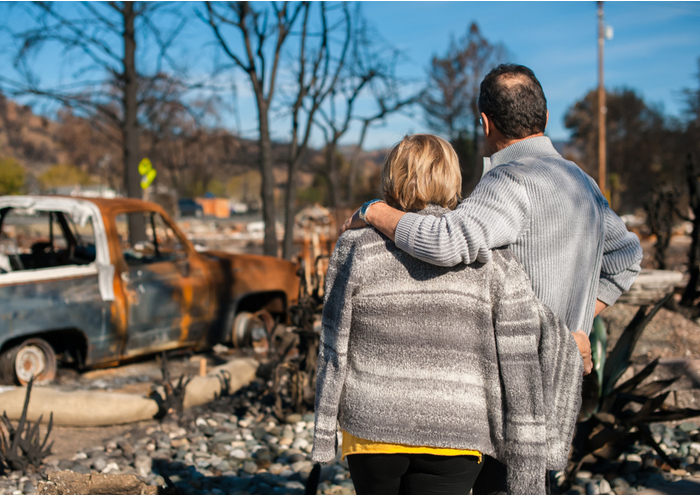How AI Could Help Predict Destructive Wildfires

AI is already being used in early testing to detect the first glimmers of deadly wildfires in California, which each year destroy billions of dollars in property, kill innocent victims in their wake and leave communities devastated.
But although wildfire detection is a start, it still doesn’t go far enough, says AI expert and futurist Neil Sahota.
Instead, what is really needed, said Sahota, is to find ways of using AI to actually predict wildfires before they ever start, which could better prevent the mass destruction they can cause.
“We know that there's a combination of factors that can lead to a wildfire and rather just be reactive, we could potentially predict them by thinking about the dryness of the air, the air temperature, even the threat of thunderstorms,” said Sahota. “Using things like drone technology combined with AI we could actually survey a lot of these areas, and using the climate information that we have, check on the risk factors of various spots of where wildfires could actually occur. We know that this is possible. The real challenge is that it's a lot of work.”
To predict wildfires with AI, a wide array of climate information would have to be utilized, including wind forecasts, satellite images, drone surveillance and more to predict where hotspots for wildfires could occur before they happen, while also predicting how fast the fires would grow. That AI data could then be leveraged by local fire and municipal officials to mitigate fire risks by clearing dry, flammable brush, setting controlled backfires and taking related steps.
Total annual wildfire costs in California in 2018 were estimated at about $400 billion, according to AccuWeather, including property damage, firefighting costs, direct and indirect economic losses and recovery expenditures.
Sahota, who is also an AI advisor to the United Nations and the chief innovation officer at the University of California at Irvine, said that creating a means to predict wildfires using AI would require intensive AI training models built around variabilities and how the wildfires start. This would make it a costly endeavor both in terms of money for training and for research, but the possibilities are promising for society, he said.
In the past, wildfires have been fought with a reactionary strategy in communities, literally using human fire spotters who watched for smoke and fire using powerful binoculars in forests and areas of wild vegetation.
Preliminary work is already being done using today using AI in Sonoma County, California, that will provide early detection of wildfires using a collection of remote video cameras that will watch for and identify the first telltale puffs of smoke and flames, which can then automatically be reported to authorities.
In March, Sonoma County awarded a $300,000 contract to Alchera Inc. of Seoul, South Korea, to develop a fire-detection platform based on the company’s machine learning technology so it can be added to the county’s Wildfire Alert Network. Alchera’s visual anomaly detection system scans standard video to spot forest fires. The company used millions of video images collected by remote cameras to train its fire-detection algorithm, developing what the startup claims is the first commercial software service for detecting wildfires.
“That's an important first step,” said Sahota, “but we're now talking about [prediction] technology that has more capabilities than just automation.”
The true value of the Sonoma County wildfire detection system will likely come in the next couple wildfire seasons, said Sahota, as people start realizing that while early detection is helpful that the real benefits will come from predicting them ahead of time.
Those possibilities are probably about three to six years away, he said.
“I listen to a lot of startup pitches,” said Sahota. “I'm an advisor for a few venture capital funds. A lot of people just think AI is a buzzword that's going to help them to get money or to open up some doors and maybe set up a nice differentiator. That in itself is not going to do that. Whatever you do with AI, it has to provide value at the end of the day.”
California is not the only place in the U.S. where wildfires happen. They can occur in other areas of the country, including Alaska, Colorado and other states.
Sahota said he thinks that most people don’t realize that about $12 billion a year is spent on fighting wildfires in the U.S., but that the estimate doesn't even include the human and animal costs, nor the tragic losses of irreplaceable home memories and related mental anguish.
“If we can even cut down the number of wildfires by 20 percent, that's a huge value back,” said Sahota. “We have the tools, we have the technology, we have a good chunk of the data. We just need to have the will to actually do it.”
To make it happen, there would have to be a community push as well as buy-in from government and fire officials on a local, state and federal basis, he said. “It probably is going to have to come from the government, in terms of ownership, funding and who runs it. I think it's going to be the municipalities, working with the fire departments. They're the domain experts.”
The lessons learned from destructive wildfire seasons past can also be used to inspire the needed changes, he said. “The problem … has been getting worse over the last few decades. We really need to commit to a better solution and we know that this is one that's moving the needle.”












